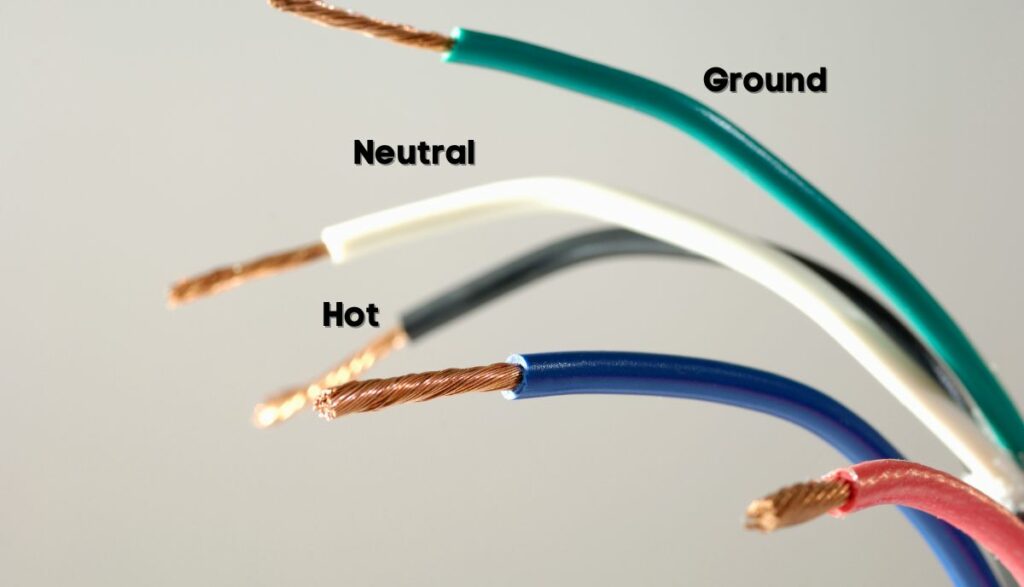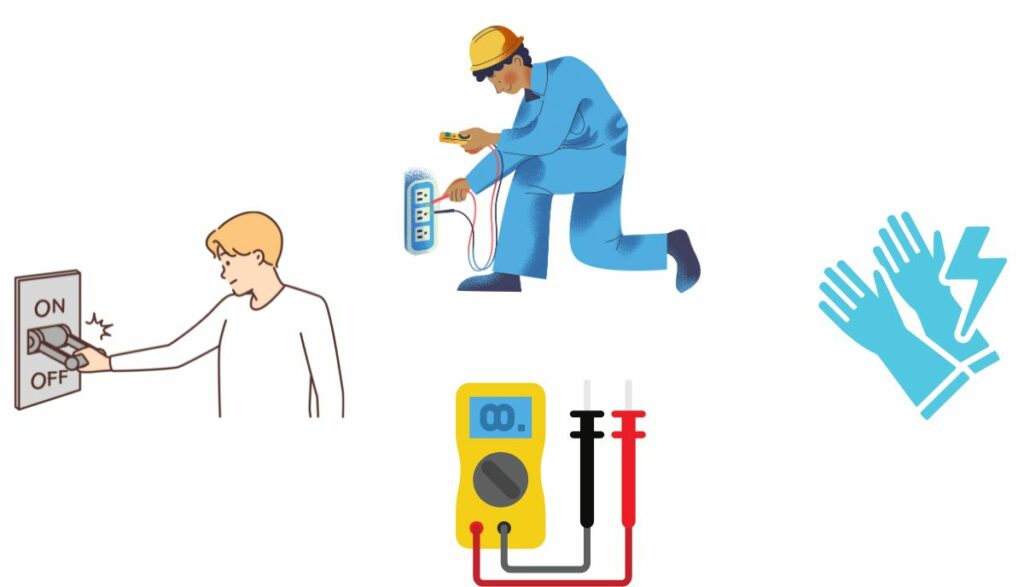Some people won’t hesitate to touch the neutral wire because it has 0 volts, or so they’ve been told. But is that true? The guide below has the answers.
Is Neutral 0V?
Electricians tend to base their calculations on ideal scenarios. For instance, your equipment will detect zero voltage between any two points on a superconducting wire regardless of the current it carries. Neutral wires are the same. They have 0V in an ideal setting where wires don’t have resistance or voltage drop. In reality, you will detect a voltage if you take measurements between two points on a neutral wire.

- Hot Wire
Circuits have a red, black, or brown wire that brings the current to the load. It has 120 – 240V, depending on your location.
- Neutral Wire
The blue wire is the neutral. Some countries use a white jacket to set it apart. The BBC has assigned the neutral 0V.
The neutral wire takes the current back to the source. Don’t assume that every blue or white line is neutral. Don’t expect the manufacturers in every country to follow the color codes you know. Test the wires to determine their identity before you handle them.
- Earth Wire
The earth wire is yellow or green, and it has 0V as well. The earth wire takes dangerous currents to the ground during surges, short circuits, and malfunctions.
- Why You Must Identify The Different Wires?
You must explore the functions each wire plays to understand their relationships with one another better. Those relationships matter because they will tell you why the layperson believes a neutral wire is safe to touch.
- How The Electrical Potential Affects Neutral Voltage?
First of all, voltage doesn’t simply exist in a vacuum. You measure it between two points. For instance, the potential between the neutral and earth wires is 0. Similar measurements between the live and neutral wires in an American home will show 120V.
The potential difference matters because the current will move from a higher potential to a lower potential. In other words, the significant potential difference between the live and neutral lines allows a current to flow between the two in a seemingly infinite loop.
How Is The Voltage On The Neutral Wire Different From The Live (Hot) Wire In A Circuit?
A circuit is essentially a loop. The live wire brings the power from the source to the appliance. The appliance won’t consume the current. Instead, the current will return to the source via the neutral wire.
But a current cannot flow unless a difference in the electrical potential exists between two points.
The voltage is 120V (or 240V, depending on your electrical system) between the hot and ground and 0V between the neutral and ground. The difference between the live and neutral wires is 120V or 220V.
That difference allows the current to flow between the hot and neutral wires. The neutral’s voltage isn’t precisely zero. But a difference in electrical potential still exists.
Can The Voltage On The Neutral Wire Fluctuate, and If So, Under What Conditions?
Sarath Perera and Sean Elphick in Applied Power Quality have described voltage fluctuations as rapid changes in the voltage magnitude.
Why would such rapid changes occur in the voltage you’ve measured between the neutral and the earth? The following may explain this phenomenon:
- An open neutral is a potential culprit. A heavy storm can disconnect the neutral wire at the service transformer. This is dangerous because it can cause electrical equipment to overheat.
- The neutral wire may come loose instead of disconnecting completely.
- Electricians will only bond the neutral and the ground at the service entrance. At that point, your measurements will show 0V. You will record a voltage higher than 0V if you measure the voltage between the neutral and the ground in other places. But the voltage should be small. If you don’t expect to register a voltage outside the service entrance, it may confuse you. You may blame the readings on fluctuations.
- You or someone else wired your circuit poorly. Some laypeople confuse the live, neutral, and ground wires, especially when the color codes change.
- Electrical wires are not perfect. That includes copper lines. Despite their impressive conductivity, they still have resistance, which produces a voltage drop. You can elevate the resistance and voltage drop by increasing the gauge and length.
- Because three-phase systems use a shared neutral connection, an imbalance between phases can create voltage fluctuations on the neutral wire. This is more likely to occur in situations where modern electronic loads use ancient distribution equipment.
What Is The Purpose Of Having A 0-Volt Reference Point In an Electrical System?
- Every system has a reference against which other points are compared. This creates meaning. Consider height as an example. National Geographic has noted that humans use sea level to determine height and depth. Why? The ocean is a continuous body that presents the same level regardless of your location in the world.
- Without a reference point like sea level, height measurements wouldn’t mean anything because the earth is not an even surface. Some places are higher or lower than others. A comparison to sea level gives height and depth measurements meaning.
- A reference point in a circuit achieves a similar objective. It gives voltage measurements meaning. This is why people measure the voltage between two points. This is comparable to defining distance. How do you measure distance without identifying two distinct points to consider?
- EC Studio Systems has published a diagram of a circuit as an example. In that circuit, point A is an arbitrarily chosen reference point by which points B, C, and D are measured. You can change the reference point to B. But that will alter your measurements, creating confusion. You’re better off sticking to a single reference point.
- With electrical circuits, contractors use a 0V reference point. However, they are free to use other reference points.
Have you noticed that you test a neutral wire by placing the multimeter’s probes against two points? The red probe touches the wire, while the black probe goes to a metal surface. The metal surface acts as a ground. It provides the 0V reference point. If the wire is neutral, the multimeter will show 0V.
What Precautions Should I Use When Working With The Neutral Wire In Electrical Installations?

People tend to downplay the threat of neutral wires. After all, a live wire in India is 220V while the neutral line is 0V. But that mindset is a mistake.
First of all, the neutral wire is not 0V. Depending on where you test the wire, it will show a few volts. Those volts are not as harmless as you assume. According to this paper from AMETEK Electronic Systems Protection, the few volts you record between the neutral and ground can disrupt the workings of sensitive devices with microprocessors.
Secondly, a neutral wire carries the same current that a live wire brings from the source. That current will kill you if you handle the wire carelessly. Therefore, you should take these precautions if you intend to hold the neutral:
- Where possible, use the main breaker to cut the power. This makes every conductor with a current harmless.
- Test the wires with a voltage tester. Confirm they are dead before touching them.
- Wear protective clothing. That includes rubber gloves, shoes, and goggles.
- Use insulated equipment.
- Occupational Health And Safety recommends keeping a helper on hand, preferably an individual who understands electrical work and safety. They will save your life if you touch an energized conductor. Helpers are particularly useful for people who must work on energized circuits.

